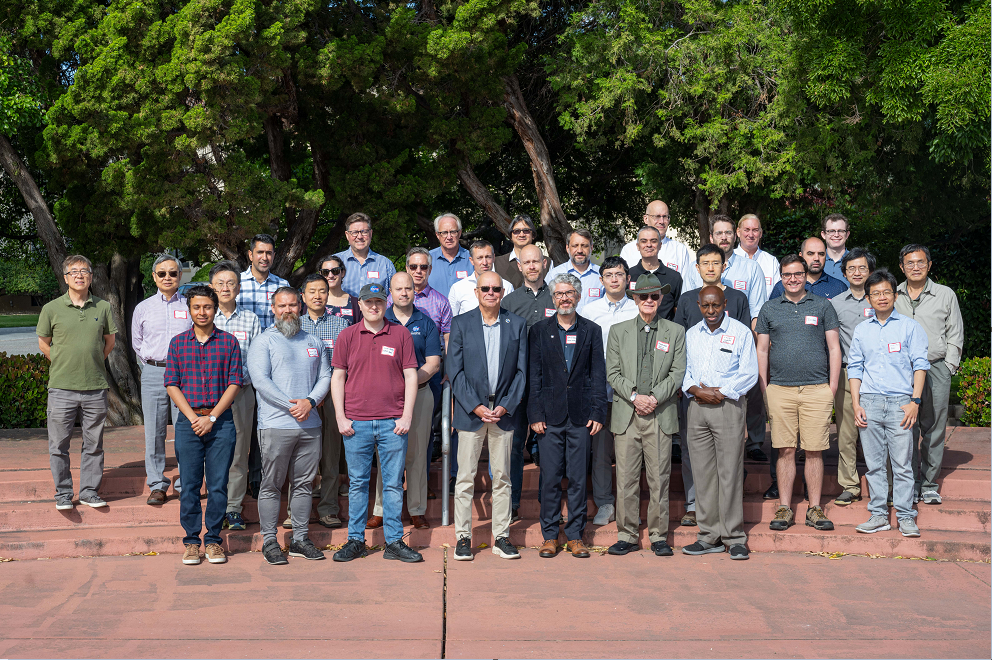Workshop sets sights on ‘NASA-scale’ potential of quantum technology for Earth observation

Participants in the Quantum technology Interchange meeting at NASA’s Ames Research Center. The meeting brought together scientists and technologists from across the country to discuss how the latest developments in quantum sensing could be used for Earth observation. (Image Credit: NASA)
7/30/24 – A group of engineers, Earth scientists, and quantum experts recently gathered at NASA’s Ames Research Center (ARC) to address a pressing question: how will quantum technology impact NASA’s quest to better understand our home planet?
Sponsored by NASA’s Earth Science Technology Office (ESTO), the two-day “Quantum Technology Interchange Meeting” brought together researchers and quantum practitioners from across the country, bound by a common desire to harness quantum phenomena for remote sensing. Presenters described the latest developments in technologies like quantum computing and atom interferometry, detailing how those technologies could enable novel Earth observation missions.
Charles Gatebe, Chief of the Atmospheric Science Branch at ARC, hosted the event. His goal, he said, was to facilitate new partnerships between universities, private companies, and government agencies eager to develop – and deploy – commercially viable quantum sensors.
“We wanted to bring together scientists and technologists, so that they could share insights with one another,” said Gatebe.
The workshop also provided attendees with insight into the types of quantum technologies NASA would like to develop further in the near term, as well as the agency’s process for selecting promising projects for its technology incubation programs

Charles Gatebe, Chief of Atmospheric Science at NASA’s Ames Research Center, provides introductory remarks on the first day of the Quantum Technical Interchange Meeting. (Image Credit: NASA)
It was valuable information for attendees like Shane Verploegh, a Senior Radio Frequency Engineer with the company ColdQuanta. “Understanding what NASA’s looking for allows me to understand the funding road map and how NASA drives scientists and technologists towards a common goal,” he said.
Verploegh presented his research about a novel quantum radar system, funded in part by ESTO’s Decadal Survey Incubation program, that would leverage excited Rydberg atoms to measure vegetation, topography, and other features of Earth’s surface.
Fan Yang, an Atmospheric Scientist at the Department of Energy’s Brookhaven National Laboratory, was previously unfamiliar with this technology. But after Verploegh’s presentation, he wonders whether it might also be useful for observing cloud microphysics.
“I learned a lot from this workshop. I don’t know quantum physics, but maybe the quantum physicists here don’t know cloud physics. We need communication and discussion, and this workshop created an environment where that could happen,” said Yang.
Marlan Scully, a University Distinguished Professor at Texas A&M who specializes in theoretical quantum optics, agreed with Yang. “It’s been an excellent workshop,” he said, adding that some of the presentations he’d seen could have an impact on his own work.
“It’s valuable for me to see what these guys are working on. No doubt I’ll take some of these ideas back and work on them a little bit,” he said.
For Peter Brereton, Director of the Quantum Engineering and Sensing Technology (QuEST) laboratory at NASA’s Goddard Space Flight Center, the workshop was an excellent opportunity to demonstrate NASA’s commitment to quantum technology development.
“We take on NASA-scale problems,” he said. “We have the privilege of being able to look at quantum technologies and move towards making them a reality.”
Gatebe said that there’s still a great deal of work to be done before the technologies discussed during the workshop become productive instruments, but bringing together experts from a variety of disciplines was an essential first step towards future quantum sensing breakthroughs.
“It’s a process,” he explained, that will ultimately enable science missions that are impossible with traditional sensors. “We will be able to access information that we could not access before.”
Gage Taylor, NASA Earth Science Technology Office